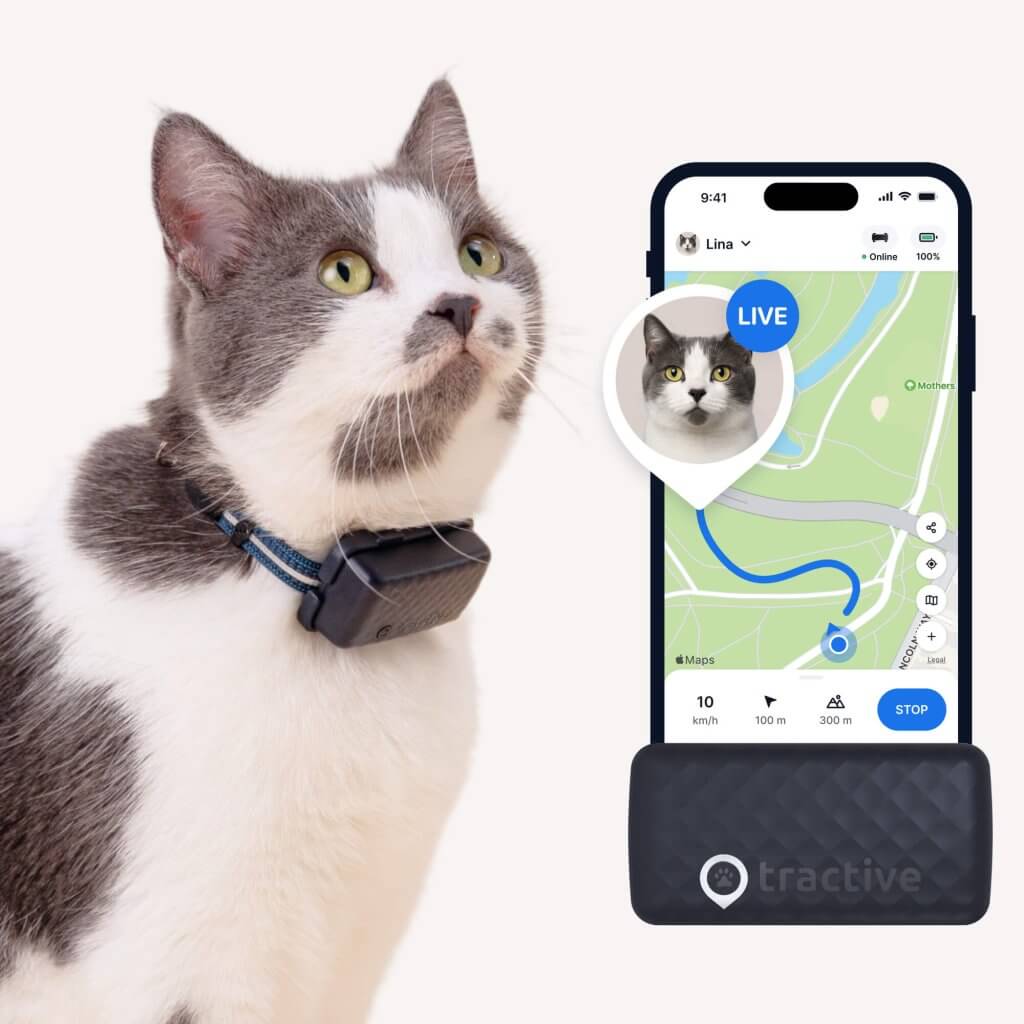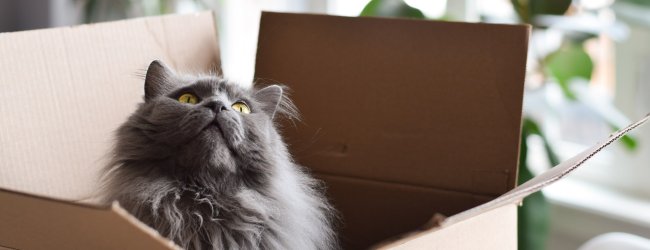How Long Do Cats Go Missing For? And Why?
Missing cat? Don't know if you should be worried or not? Find out why cats go missing, how long is normal to stay away - and what you can do to prevent your cat from going missing next time.
With all the reasons they have to run away, you as a loving cat parent, want to ensure their safety every step. So if you’ve turned up here wondering – how long do cats go missing for? – you’re not alone. While the exact answer is difficult to pin down, it can depend on the reasons your cat ran away from home in the first place. And more importantly, why they’re staying away. So we’re going cover the different reasons why cats stay away from home, how long is normal for them to stay away, and the best way to prevent your cat from going missing.
Key Takeaways
The duration varies, but a quick search is best.
While cats have a homing instinct, the duration of their disappearance can vary. You’re best off starting to search for a missing cat within 12 hours.
Cats go missing for various reasons.
These include the season, their age, being in heat, or territory disputes.
A Tractive smart cat collar can help you find your missing cat.
From your mobile app, you can pinpoint a cat’s exact real-time location and retrace their steps with location history. Else, set up “safe zones” around your home or backyard and get an escape alert if they venture past it.

Find out where your cat spends their time.
Read more- Key Takeaways
- Do cats come back home if they run away?
- How do cats find their way home?
- How long do cats go missing for ?
- When should you start worrying about your missing cat?
- Checklist: What you can do to quickly find your lost cat
- “Call a cat” – training your cat to get home quickly
- Where a smart cat collar can help in an emergency
Do cats come back home if they run away?
The good news is: cat’s do have a homing instinct that can help them find their way back home. No matter if your cat prefers the indoors or exploring the great outdoors, they all have a homing instinct.1 This is why we recommend socializing younger cats and newly rehomed cats plenty of time to get used to the outdoors. It helps your cat familiarize themselves with the natural environment around their “home base”. So it’s easier for them to make their way back to you.
Even if you have a roaming kitty on your hands, many cats who wander away from home may find their way back and return eventually. And if you take an active role in searching for them, your chances of finding your cat alive and well are higher.
How do cats find their way home?
When a cat goes missing, their sense of smell and memory of familiar landmarks can help them navigate back home. But it’s important to note that this can vary from one cat to another. Some important factors include how far off they’ve wandered, how old they are, and their previous experiences.
Read more: Can Cats Find Their Way Home? (Like, Really?)

Track your cat wherever they go
Get real-time location information, wherever they go. Find out when they go somewhere they shouldn’t, with Virtual Fences. And discover their favorite spots with Territory.
How long do cats go missing for?
Cats run away for a whole bunch of reasons. But more importantly – why do they stay away? Here are a couple of reasons why:
| Why your cat is staying away | How long do cats go missing for? |
| Season: Cats stay away much longer in summer than in winter. | A few hours |
| Age: Younger cats tend to be on the road longer and explore more. | Several hours |
| Outdoor cats: They explore their surroundings and can be on the road for a very long time. | Hours to days |
| Cats in heat: If not neutered and just in heat, their only mission is reproduction. | Days to 1 week |
| Territory: Cats are territorial – so they might find themselves in a turf war or two. Your cat may be injured and not make it home. | Days to months |
| Disorientation: Your cat might not find their way back (e.g. if they haven’t sufficiently adjusted to the new home after moving). | Undetermined |
| New family: Your cat has found a place where she feels more comfortable than with you. (Most likely if one of your neighbors has been feeding them.) | In rare cases, your cat might return. |
| Sick cats: Cats are more likely to masks signs of illness and discomfort. So they might hide away – sometimes in a far-off place where they feel more secure. At times, they might not return because their health condition might have changed for the worse. | Undetermined |
It can be difficult getting a clear answer when you might not know the reasons your cat ran away in the first place. And sometimes, cats might go missing from a few hours to days, weeks, months, or even years. So keep an eye out for your cat’s regular behaviors. (Like, for example, if they seem more restless or lethargic than before. It could hint that they’re struggling with a sickness.) If you spot a change, it could indicate why they might run or stay away from home.
When should you start worrying about your missing cat?
As a general rule, start your search within 12 hours of your cat going missing. Past the 90-day mark, it’s less likely you’ll find your lost cat alive. If your cat is used to a certain routine, it knows when there is something to eat at home and will return at this time, in the evening at the latest. And here’s some good news – a 2018 study found that 61% of missing cats were found within one year. 34% were found (alive) within a week.
A physical search is one of the most successful ways to find a missing cat.2 So the faster you get started with your search, the better your chances for finding them.
Checklist: What you can do to quickly find your lost cat
- Call out your cat’s name
Keep some of their favorite food around the house to lure them in. - Search your immediate area
Watch out for dark hiding places, tall trees and roofs. - Ask neighbors
Especially other cat owners – and if they can spread the word. - Check with your municipality
Or road maintenance department whether a dead cat was found on the street. - Get in touch with your local animal welfare organizations and shelters
They could check if a cat has been found and / or given in. - Distribute flyers in your neighborhood
If necessary, place an advertisement in the local newspaper or in a daily newspaper. - Share a photo of your missing cat on your social media channels
Encourage your friends and family to distribute it as much as possible.
Read more tips to find a lost cat here.
Tip: We’d recommend searching again after sunset. Cats that are frightened and have hidden somewhere often only dare to leave their hiding place in the dark. (Because they’re nocturnal by instinct – so more energetic around nighttime.)
“Call a cat” – training your cat to get home quickly
Cats might not be able to learn to walk at heel like dogs. But they can come to you when you call. If your feline friend is outdoors, here’s a practical guide to teaching them to respond to “Come”:
- Select a specific command to call them. (For e.g. “Mitsi! Come!”)
- Reward your cat immediately (with a treat or a pat) when they respond. It might take some time for your cat to pick up on it. So be extra mindful you’re rewarding them at the right time.
- If your cat doesn’t respond, lure them in with some toys. (But avoid treats. Only reward those when your cat responds to your verbal command.)
- If your cat comes to you without you saying “Come” – ignore them. You want to teach your cat to associate the sound of your voice and “Come!” with a treat.
- Practice, practice, practice – several times a day over a longer period of time. It can take several weeks for your cat to learn the exercise. But if it means ensuring your cat’s safety, it’s worth it.
Cats are creatures of habit. Which means if you always call them at the same time, they will develop a familiar routine. So an ideal time to practice this command is during evening mealtimes.
Where a smart cat collar can help in an emergency
When your cat goes missing, every second feels like an eternity. Whether they’ve wandered too far from home, gotten stuck in a neighbor’s garage, or found themselves in an unfamiliar area, acting quickly is key. That’s where the Tractive smart cat collar becomes a true lifesaver.
Strapped to your cat’s collar, your trusty Tractive device now helps you:
- Pinpoint your cat’s exact location – in real-time
With LIVE tracking, you can figure out your cat’s exact location and follow their movements on the map – no more guessing or relying on missing cat posters. If your cat is hiding or stuck somewhere, you’ll know exactly where to look. - Retrace your cat’s steps or identify their favorite spots
From their Heat Map & Location History – a huge plus if your cat tends to roam or gets startled and runs off. - Make looking for your cat a team effort
Share your cat’s location with friends, family, or neighbors using the LIVE Tracking Link, so you’re not searching alone.

In short: when time matters most, a smart cat collar like Tractive gives you the tools to act fast, stay calm, and bring your cat home safely.



